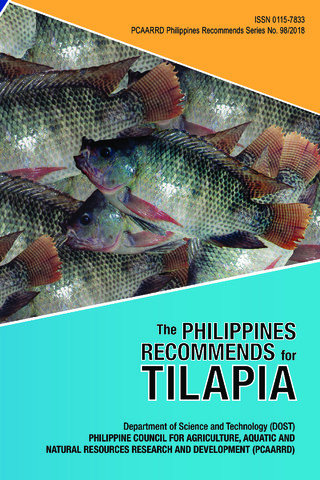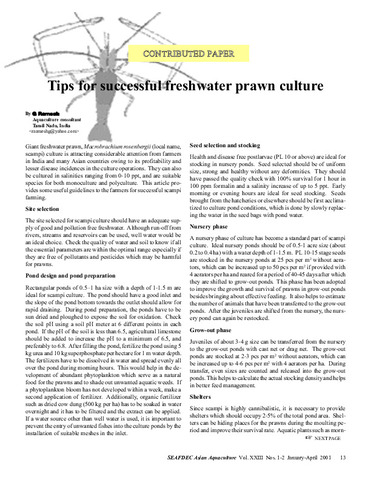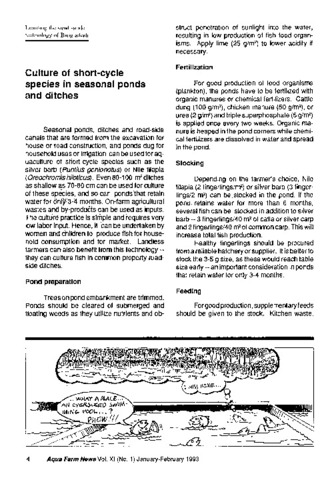Pond liming and liming materials for brackishwater ponds
- Global styles
- MLA
- Vancouver
- Elsevier - Harvard
- APA
- Help
Download URL
www.fao.orgDate
1986Author
Page views
2,862ASFA keyword
AGROVOC keyword
Metadata
Show full item record
Share
Abstract
Vital information aquaculturists need to know on lime are: (a) what lime to use; (b) why lime is used; (c) which form to apply; (d) how much to apply; and (e) when to apply.
Experiments on the use of lime in brackishwater ponds at SEAFDEC Leganes Research Station pointed out the need to apply lime at least once a year and the importance of determining the quality of the soil.
Application of 1–2 tons agricultural lime per hectare in extensive shrimp ponds was observed to be significantly effective in improving the pH and hastening the decomposition of organic matter in soil. Considerable water outflows from intensive and semi-intensive shrimp ponds made the lime ineffective. It was observed that liming showed no significant change in soil pH due to this water outflows.
Proper water and soil management plus lime can improve the pH of newly renovated or constructed ponds and peripheral canals.
To eradicate pests and predators, lime with ammonium sulfate is effective as a substitute for synthetic pesticides.
Description
Also in : Modern Fish Farming 1987. p.23-29.
Type
Conference paperCollections
- Conference Proceedings [299]
Related items
Showing items related by title, author, creator and subject.
-
Series: Philippines Recommends Series; No. 98/2018
The Philippines recommends for tilapia
The Tilapia Technical Committee 2017 (DOST-PCAARRD, 2018)Tilapia is one of the most commercially important commodities in fisheries and aquaculture. Although tilapia is relatively easy to propagate and culture, the Philippine tilapia industry needs the necessary boost in the ... -
Tips for successful freshwater prawn culture
Ramesh, G. (Aquaculture Department, Southeast Asian Fisheries Development Center, 2001) -
Culture of short-cycle species in seasonal ponds and ditches
Castaños, Milagros T.; Southeast Asian Fisheries Development Center, Aquaculture Department (Aquaculture Department, Southeast Asian Fisheries Development Center, 1993)




